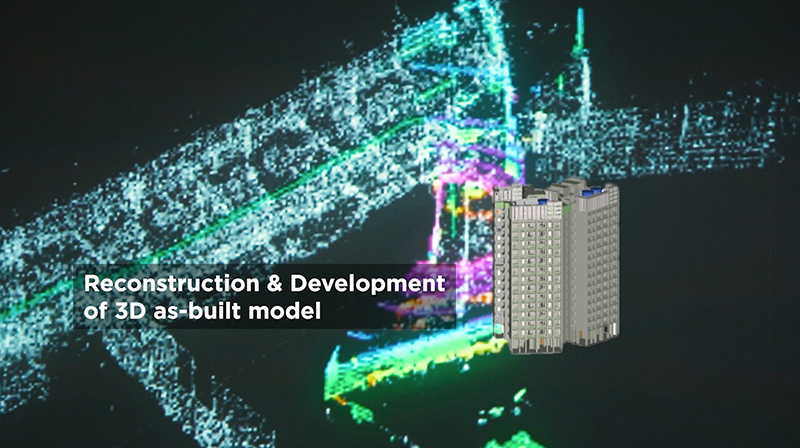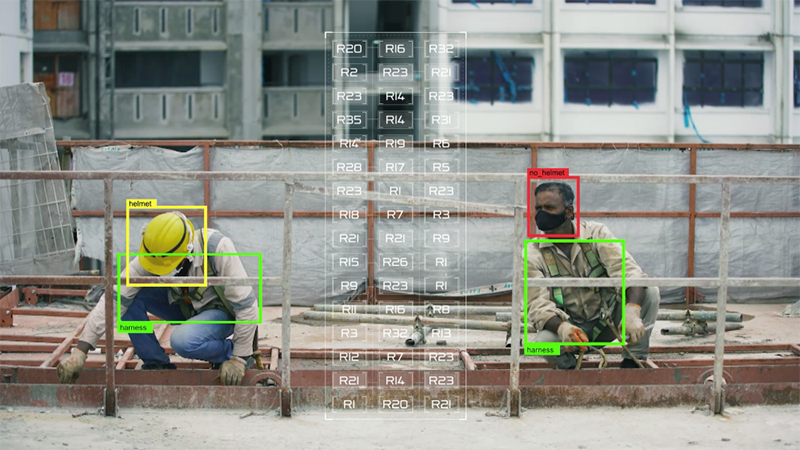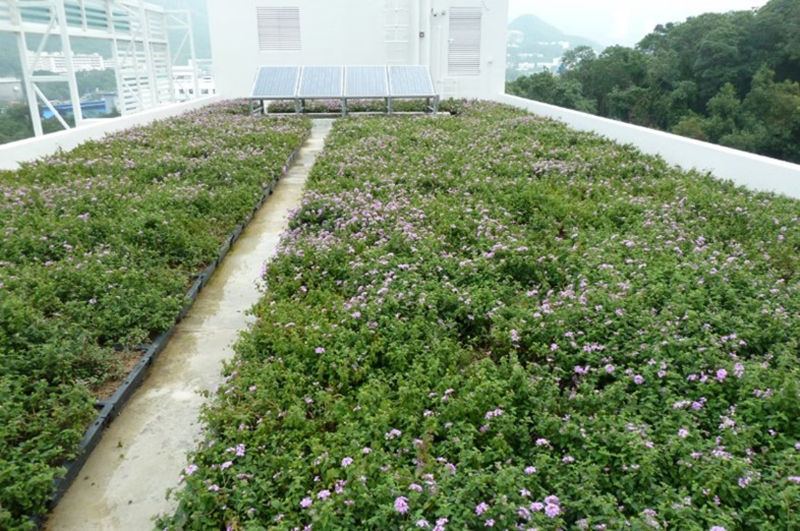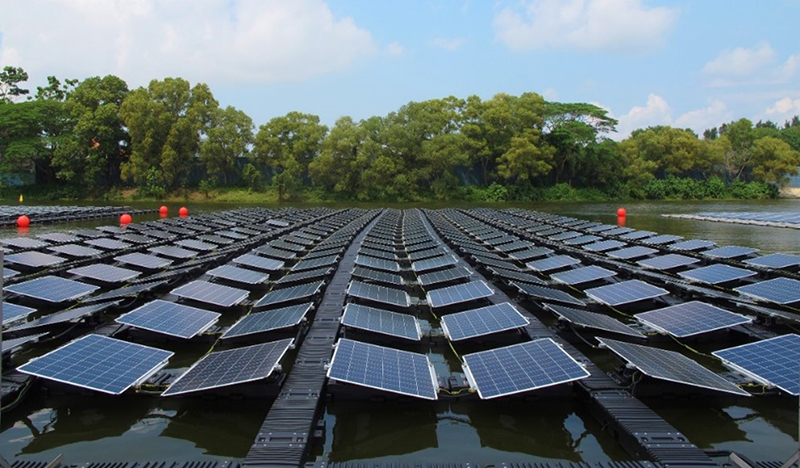A*STAR NEWS
PRESS RELEASES
HDB and A*STAR Ink Collaborations to Advance Smart Construction Technologies
The Housing & Development Board (HDB) and Agency for Science, Technology and Research (A*STAR) have inked two collaborations to develop and adopt 5G-enabled smart construction technologies, as well as to facilitate partnerships and commercialisation of the research outcomes developed by agencies under the Ministry of National Development (MND) for operational use. The collaborations, announced at the Urban Sustainability R&D e-Symposia 2021 Opening Webinar today, aim to transform the Built Environment sector by developing more productive ways to design, build, and maintain our city.
2. The two collaborations are:
- A Research Collaboration Agreement (RCA) between HDB and A*STAR’s Institute for Infocomm Research (I2R) to enable smarter construction, by developing and adopting 5G-enabled robotic, drone and artificial intelligence technologies that can help raise productivity and improve safety at construction sites.
- A Memorandum of Understanding (MOU) between HDB and A*STAR to bring together the research community, agencies and industry partners to facilitate partnerships in technology transfer and translate R&D outcomes into commercially ready products.
3. HDB’s Chief Executive Officer, Mr Tan Meng Dui said, “As the master developer of public housing in Singapore, HDB constantly seeks to leverage innovative technologies and smart solutions that can help us deliver quality homes for Singaporeans. Through relentless research and innovation over the years, we have built up a wealth of knowledge in urban solutions for the built environment. We will continue to work closely with industry partners to accelerate technology transfer, so that the built environment sector can benefit from of our R&D outcomes.”
4. “A*STAR is increasing our support of the Urban Solutions and Sustainability (USS) domain under Research-Innovation-Enterprise (RIE) 2025. A*STAR is collaborating closely with HDB on introducing innovative technologies into the built environment sector, and catalysing more public sector collaboration with industry. We also aim to work with HDB to translate public sector R&D into positive impact on our society and economy, through such collaborations,” said Mr Frederick Chew, Chief Executive Officer, A*STAR
Research Collaboration Agreement (RCA) to Develop Smarter Construction Technologies
5. The COVID-19 pandemic has affected the supply of building materials and manpower within the construction industry. This has put unprecedented pressure on the construction timelines of building projects across both the public and private sectors. There is thus a strong impetus for the industry to accelerate the adoption of advanced technologies and digitalisation to help us build faster, safer and more efficiently. With the impending roll-out of 5G network in Singapore, there is an opportunity for greater use of automation and robotics in the construction sector, leveraging on 5G technology, to enhance productivity and reduce labour dependency.
6. The collaboration between HDB and A*STAR’s I2R seeks to research and develop a system which will capture videos, images and data through the use of sensors on robots (legged and wheeled) and drones. Examples of how such information can be used to improve productivity include:
- Scanning and mapping of the construction environment to develop an up to date as-built model (i.e. exact rendering of the construction project as it is built) using light detection and ranging (LiDAR) technology ; and
- Enhancing safety of the construction site through real-time video-streaming and surveillance of construction activities
Scanning and mapping of the construction environment to develop as-built model using LiDAR sensing technology
7. HDB will study the possibility of employing drone fleets and robotics systems equipped with LiDAR laser scanning technology, to automate the scanning of actual physical built environments into a 3D as-built site model. Currently, the development of as-built models in the construction industry, which typically takes place when construction is nearing completion, is manual and labour-intensive. By deploying a fleet of drones and robotics systems that can intelligently monitor various aspects of a construction site, the entire process can be automated to enable onsite scanning and mapping of the construction site into a 3D as-built model. This will bring about savings in manpower and time.
8. To allow the drones and robots to function smoothly, HDB will leverage 5G technology for its high data transmission rate and increased network capacity. A*STAR will develop a 5G modem prototype module with low latency and robust communication link, to enable onsite scanning and mapping of the site as the project is built, and real-time monitoring of activities at construction sites.

By using drone fleets and robotics systems equipped with LiDAR laser scanning technology, a 3D model of the construction site can be progressively built up as construction progresses.
Enhancing safety of the construction site through real-time video streaming and surveillance of construction activities
9. Today, most construction sites employ static CCTV systems to assist with site monitoring. As construction sites cover a large area, there may be spots which are not covered by the scope of the CCTVs. Tapping on 5G technology, HDB will explore the deployment of
10. Through cameras mounted on the drones and robotics systems, high-definition real-time videos of the site environment can be captured wirelessly. Artificial Intelligence (AI) and machine learning technologies will be applied to the live video feeds, so that the system can automatically identify safety lapses and detect potentially unsafe behaviours and conditions at HDB construction sites in real time. When such lapses are detected, alerts can be immediately sent to the relevant personnel so swift action can be taken to rectify the situation. and resolve the issue. This acts as a mobile monitoring system to augment the manual supervision by safety officers on site.

Artificial Intelligence (AI) and machine learning technologies will be applied to video feeds captured on drones and robotic systems to automatically identify safety lapses in real time
11. To ascertain the performance of the system, trials will be conducted at a selected HDB construction site that has ready 5G coverage. The research study is expected to span 2.5 years. If the trials prove successful, HDB will consider extending the system to more construction sites.
Memorandum of Understanding (MOU) to Facilitate Partnerships in Technology Transfer
12. Over the years, HDB has pioneered new and innovative solutions to provide our residents with a quality living environment. To safeguard these solutions for continued use in HDB projects, HDB has filed over 30 patents for our inhouse developed innovations. Examples of such solutions include the Prefabricated Extensive Green (PEG) Roof Tray System and the Floating Solar System (FSS).
PEG Roof Tray System
13. The PEG Roof Tray System was developed to intensify HDB’s greening efforts on rooftops. Besides deploying the system in HDB’s housing projects, HDB tied up with local firms, Eng Seng Tech Pte Ltd and Plantwerkz Pte Ltd, to commercialise our product in countries and cities such as China, Hong Kong and Malaysia.

The PEG Roof Tray System helps to green the rooftops of buildings, thereby addressing the environmental concerns of many urbanised cities with limited green spaces.
Floating Solar System (FSS)
14. In our push to generate more clean energy and accelerate solar adoption in Singapore, HDB invented the FSS which supports solar panels on water bodies to harness solar energy. The FSS was adapted from a modular floating system known as the Floating Wetland System that was earlier patented by HDB for cultivating wetland plants. Following the successful test-bedding of the FSS in Tengeh Reservoir in Tuas, HDB collaborated with a local company, ISO Landscape Pte Ltd to deploy 5 MegaWatt-peak (MWp) FSS off the coast of Woodlands.

The floating solar system holds solar panels on water bodies to harvest solar energy.
Forging Closer Partnerships in Technology Transfer
15. Building on our R&D efforts, the MOU between HDB and A*STAR seeks to forge closer partnerships among the research community, government agencies and industry partners over the next 3 years, to facilitate technology transfer and translate R&D outcomes into impactful solutions for Singapore, and potentially for cities around the world.
16. With our prior experience in intellectual property (IP) management, HDB has been appointed the lead agency for IP management and technology transfer, for the agencies under the Ministry of National Development. The MOU will tap on A*STAR’s expertise, connection with the industries and the local science and technology ecosystem, to facilitate collaborations to commercialise MND R&D outcomes and IPs. Over the years, A*STAR has accumulated proficiency in dealing with numerous research collaborations and licensing agreements with the industry, and will be able to facilitate business matching opportunities between the agencies and industry partners. This includes facilitating knowledge sharing and organising joint events to build up a network of industry partners for MND agencies. Where needed, A*STAR will also help to further develop MND IPs into commercial solutions or products that are useful for the industry.
Issued by : Housing & Development Board and Agency for Science, Technology and Research
Date : 26 March 2021
1 LiDAR is a remote sensing technology that uses light in the form of a pulsed laser to measure distances to a target multiple drones or robotics systems simultaneously, to make monitoring over a larger surface area more efficient.
2 Latency refers to the time lag or delay before a response is generated.
About the Housing & Development Board (HDB)
The Housing & Development Board (HDB) is Singapore's public housing authority. We plan and develop Singapore's housing estates; building homes and transforming towns to create a quality living environment for all. We provide various commercial, recreational, and social amenities in our towns for our residents’ convenience.
Singapore's public housing has housed a nation – today, more than 1 million flats have been completed in 23 towns and 3 estates across the island. HDB flats are home to over 80% of Singapore's resident population, with about 90% of these resident households proudly owning their home. For over 60 years, we have provided quality and affordable public housing for generations of Singaporeans, and we are proud to continue doing so. For ongoing news, visit www.hdb.gov.sg
About the Agency for Science, Technology and Research (A*STAR)
The Agency for Science, Technology and Research (A*STAR) is Singapore's lead public sector R&D agency, spearheading economic-oriented research to advance scientific discovery and develop innovative technology. Through open innovation, we collaborate with our partners in both the public and private sectors to benefit society.
As a Science and Technology Organisation, A*STAR bridges the gap between academia and industry. Our research creates economic growth and jobs for Singapore, and enhances lives by contributing to societal benefits such as improving outcomes in healthcare, urban living, and sustainability.
Was This Article Helpful?
A*STAR celebrates International Women's Day

From groundbreaking discoveries to cutting-edge research, our researchers are empowering the next generation of female science, technology, engineering and mathematics (STEM) leaders.
Get inspired by our #WomeninSTEM
